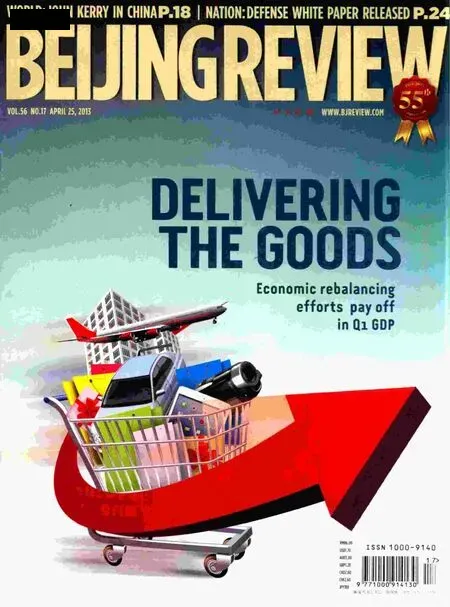Rebalancing Efforts on Track
China’s economic growth has undergone significant change, shifting from one primarily dependent on investments and exports to one of consumption. According to figures from the National Bureau of Statistics, of the 7.7-percent GDP growth registered in the first quarter, more than half—or 55.5 percent—was due to consumption, while investment contributed 30.3 percent to growth. Net exports of goods and services only accounted for 14.2 percent.
In the first quarter, the service sector grew by 8.3 percent year on year. Added value by the service sector accounted for 47.8 percent of the GDP, an increase of 1.6 percentage points higher than the figure in the same period last year. All this indicates that consumption has become a major engine driving China’s economic growth.
As for the country’s industrial structure, added value by the hi-tech sector in the first quarter rose by 11.9 percent, much higher than that in the fourth quarter last year. During the same period, added value growth by heavy industries, especially the six industries with high energy consumption, declined 1.1 percentage points than that in the same period last year, and per-unit energy consumption by industrial enterprises with annual sales revenue of above 5 million yuan ($802,568)dropped by 6.5 percent over a year ago. This means the Chinese economy is witnessing a transfer from extensive growth to intensive growth.
Transformation of China’s economic growth model and encouraging signs of economic restructuring are consolidating sound and sustainable economic growth in China.
However, in this crucial period of economic restructuring, China should pursue a steady economic recovery. Considering China’s need for mid- and long-term economic development, a growth rate between 7.4 percent and 8 percent is reasonable. Any opinion that China’s economic growth has lost steam fails to understand the shift underway in the country’s economic development.■

